Many people think that museums are quiet places that nobody ever visits.
They imagine that they are filled with dusty, old objects and with old and serious people who say “don’t” all the time:
Don’t run!
Don’t touch that!
Don’t make so much noise!
Would you believe that museums aren’t really like that at all? How many of you have seen an ant farm?
In an ant farm, there are ants that you see working above ground…and some that you will not see because they are working underground. In the same way, museums look peaceful on the outside, but underneath there are lots of friendly smiling people working away at a fast pace to keep things running smoothly!
Let’s take a look at the Islamic Arts Museum Malaysia in Kuala Lumpur:
Admissions and Tickets
You may purchase your entry tickets at our Customer Service counter upon arriving at the Lobby. The admission fees are as below:
Adults RM20
Students RM10
Senior citizens (Malaysian) RM10
Senior citizens (non-Malaysian) RM20
Children under 6 Free
- Students are required to show a valid ID while purchasing their tickets.
- Payments can be made in cash or card.
Who will be the first person to say “hello!” to me when I come through the door?
Customer service is always ready with a smile to greet you!
- giving tickets
- answering phones
- giving directions
What is a customer?
That’s you! That means that these people are here to help you and give you directions to wherever you want to go.
What are “Curators”?
Curators are those who make sure new exhibitions are brought to you as they do:
- research and writing
- supervising the collection
- organising exhibitions
Curators study objects and learn about their history so that they can tell the story of the objects to visitors. We have about 8000 objects in our museum. That is a lot of stories to tell!
What do you learn during a tour?
Education staff will bring you on a tour where you can ask them questions about the museum:
- briefing
- guided tour
- educational activities
Education staff will guide you around our galleries. They are the team responsible for giving briefings about the museum and the artefacts. They also prepare the educational activities at the museum, such as workbook, quizzes, crafts, calligraphy workshops and much more. They are responsible for making learning fu at the museum!
Who puts the objects in the glass cases and makes the displays look beautiful?
Display designer create the setting of each gallery according to a theme:
- putting artefacts on display
- handling info panels and captions
- colourful and interesting design backdrops
These are our gallery designers. After the curators study the objects, the display designers decide where the items should be put in the galleries. The designers then decide on the colours, patterns, pictures and the way the objects should be arranged. They make small models of the gallery so that we can see what it will look like before working on the actual galleries!
Who stops all these old objects from falling apart?
Conservators help to preserve the artefacts so that it can last for another hundred years or more!
- restoring artefacts
- gallery checks
- humidity & temperature readers
There is a large team of people in white coats who work in the museum’s laboratories. There are many of them because they each need to take care of different things. Some are experts repair old books. Some are experts at fixing old potteries. Some know how to fix old pieces of cloth, and others know how to care for wood or stone or metal or glass. They spend all day doing very delicate and important work in a quiet part of the museum.
They also study the history of objects so that they can restore these items in the same ways and use the same materials that people in the past did!
Who protects the visitors and the museum’s treasures?
The Security help to keep the artefacts safe as well as make sure you don’t go poking too much around the galleries!
- patrolling the galleries
- control room
These are our museum guards. They protect our visitors, our staff and our objects ,so their work is very tiring but very important! It is exhausting because the security guards don’t go home at night! That’s right, the museum is NEVER left empty! All night the guards walk around the museum and keep an eye on everything. They lock up the museum when everyone goes home at night and open it again in the morning.
How do they manage to keep an eye on every part of the museum at once??
They have a room full of TV screens that show you every part of the museum and they communicate with each other through walkie-talkies.
How does the museum always stay so clean?
Museum keepers make sure everything is spick and span when you arrive!
- cleaning cases
- vacuuming / polishing
In a museum as big as this one, it’s hard work to keep every surface spick and span and shiny. Especially when there are people coming in and out of the museum all day! There are so many places in the museum to keep tidy. There are the galleries, the shop, the library, the restaurant, the wash rooms, and the offices… no wonder they are always running around!